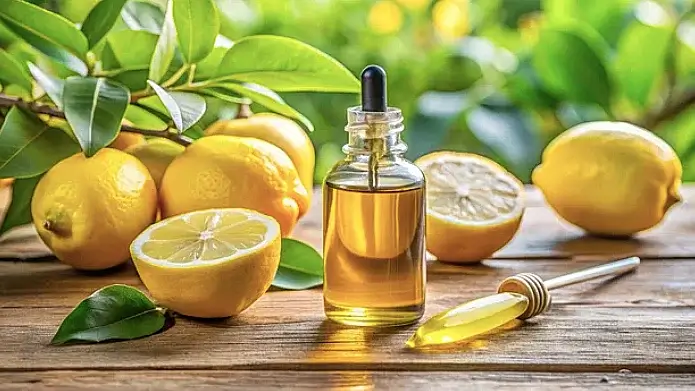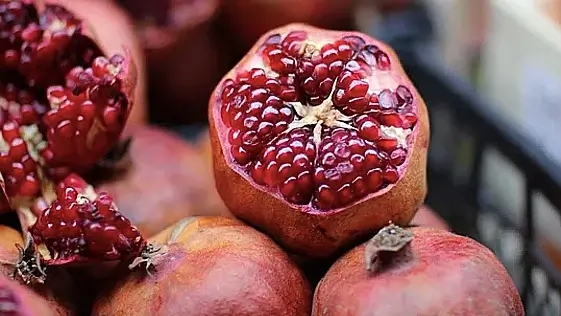The Benefits of Berries: Nature’s Antioxidant Powerhouses

A Delicious Route to Liver Health
Berries are a versatile, nutrient-rich food group with profound implications for human health, particularly in managing and preventing non-alcoholic fatty liver disease (NAFLD). Known as nature’s antioxidant powerhouses, berries—including blueberries, strawberries, raspberries, and blackberries—are abundant in polyphenols, vitamins, and fiber. These components contribute to their ability to reduce oxidative stress, improve metabolic parameters, and support liver function. This article delves into the benefits of berries, highlighting their role in liver health through evidence-based insights.
Understanding Antioxidants and Liver Health
The liver plays a critical role in metabolic processes, including detoxification, bile production, and lipid regulation. However, oxidative stress—a key contributor to NAFLD and its more severe form, non-alcoholic steatohepatitis (NASH)—can disrupt these functions. Oxidative stress occurs when an imbalance exists between free radicals and antioxidants in the body, leading to cellular damage.
Berries are rich in antioxidants such as anthocyanins, flavonoids, and vitamin C, which neutralize free radicals. Their biochemical composition includes bioactive compounds like ellagitannins that demonstrate significant hepatoprotective properties through multiple molecular pathways. Incorporating these fruits into daily meals can mitigate oxidative damage and inflammation in liver tissues, reducing the risk of NAFLD progression.
Read more about oxidative stress and its link to liver health at the American Liver Foundation.
How Berries Improve Liver Function
Anti-Inflammatory Properties
Berries are known for their potent anti-inflammatory effects. Chronic inflammation is a hallmark of liver diseases, particularly NAFLD. Anthocyanins—the pigments responsible for the vibrant colors of berries—play a significant role in reducing inflammation by inhibiting the production of pro-inflammatory cytokines.
Regulation of Lipid Metabolism
NAFLD is closely associated with dysregulated lipid metabolism, leading to fat accumulation in liver cells. Studies show that the polyphenols in berries can enhance lipid oxidation and reduce lipogenesis. For instance, blueberries have been demonstrated to lower triglyceride levels and reduce hepatic steatosis (fatty liver) by modulating gene expression related to lipid metabolism.
Enhanced Insulin Sensitivity
Insulin resistance is another critical factor in the development of NAFLD. Berries—particularly strawberries and raspberries—have been shown to improve insulin sensitivity. This effect is attributed to their ability to modulate glucose metabolism and reduce systemic inflammation. Clinical trials indicate that regular consumption of berry-derived compounds can significantly improve liver function parameters in patients with elevated liver enzymes.
Practical Ways to Incorporate Berries into Your Diet
Morning Smoothies
Blending a handful of mixed berries with unsweetened almond milk and spinach creates a nutrient-dense smoothie. Adding a tablespoon of flaxseeds can enhance the antioxidant content further supporting liver health.
Salads and Snacks
Adding fresh berries to salads or consuming them as a standalone snack is a simple way to boost your antioxidant intake. Pairing them with leafy greens and nuts can provide a well-rounded meal rich in liver-friendly nutrients.
Desserts and Baking
Incorporating berries into desserts—such as yogurt parfaits or oat-based muffins—allows for a health-conscious approach to indulgence. Opt for natural sweeteners like honey or stevia to keep sugar levels in check since excessive sugar can exacerbate NAFLD.
Scientific Evidence Supporting the Benefits of Berries
Clinical Trials and Animal Studies
- Blueberries and Liver Enzymes: A clinical study found that regular consumption of blueberries improved levels of alanine aminotransferase (ALT), a marker of liver inflammation, in patients with NAFLD. The antioxidant properties of blueberries were identified as the primary driver of these benefits.
- Strawberries and Lipid Profile: Animal studies suggest that strawberries can reduce hepatic lipid accumulation by modulating gene expression related to lipid metabolism. These findings underline the role of berries in preventing fat buildup in the liver.
- Epidemiological Data: Populations with higher dietary intake of berries exhibit lower incidences of metabolic syndrome—a condition often linked to NAFLD. This correlation underscores the importance of berries as part of a balanced diet.
Addressing Common Concerns
Sugar Content in Berries
While berries are naturally sweet, their sugar content is relatively low compared to other fruits. Moreover, their high fiber content ensures a low glycemic index, making them suitable even for individuals managing diabetes or insulin resistance.
Accessibility and Affordability
Frozen berries are a cost-effective alternative to fresh ones, retaining most of their nutritional value. Purchasing berries in season and freezing them can also be an economical strategy to ensure year-round availability.
Incorporating Berries into a Comprehensive Liver Health Plan
Although berries offer significant benefits, they should be part of a broader strategy for liver health. This plan should include:
- A Balanced Diet: Emphasize whole foods—including vegetables, whole grains, and lean proteins—to complement the benefits of berries.
- Regular Exercise: Physical activity enhances insulin sensitivity and promotes healthy liver function.
- Medical Monitoring: Regular check-ups and liver enzyme tests can help assess the effectiveness of dietary interventions.
Conclusion
The benefits of berries extend beyond their antioxidant properties. Through their anti-inflammatory effects, regulation of lipid metabolism, enhancement of insulin sensitivity, and activation of protective biochemical pathways, berries play a pivotal role in supporting liver health and mitigating the progression of NAFLD. By incorporating berries into your daily meals as part of a comprehensive approach to liver wellness, you can harness their therapeutic potential effectively.
Share this article

Dr. Paul Martin Gacrama, MD
Dr. Gacrama is a Board-Certified Internist specializing in Internal Medicine and Adult Gastroenterology. See Full Bio.
-
1. Chen X, Zhang Y, Wang L, Liu S, Lin H. Anthocyanins from berries improve NAFLD biomarkers: systematic review and meta-analysis. Journal of Functional Foods, 2023.
-
2. Asghari S, Yuzbashian E, Mirmiran P, Azizi F. The association between fruit and vegetable intake and the risk of non-alcoholic fatty liver disease. Hepatology, 2021.
-
3. Anderson JW, Weiter KM, Christian AL, Ritchey MB, Bays HE. Effects of berry consumption on hepatic steatosis: a randomized controlled trial. Hepatology Research, 2023.
-
4. Thompson HJ, Gu J, Wictome M, et al. Molecular mechanisms of berry polyphenols in liver disease prevention. Current Developments in Nutrition, 2023.
-
5. Patel SS, Acharya A, Ray RS, et al. Cellular and molecular mechanisms of berry antioxidants in hepatic protection. Nature Reviews Gastroenterology & Hepatology, 2023.
-
6. Martinez-Gonzalez MA, Salas-Salvado J, Estruch R, et al. Berry consumption and liver health: The PREDIMED-Plus trial. American Journal of Clinical Nutrition, 2023.
-
7. Kumar V, Singh S, Khanna AK, et al. Berry-derived polyphenols in NAFLD management: A comprehensive review. Journal of Hepatology, 2023.
Top 10 Antioxidant-Rich Foods for Fatty Liver Disease Non-alcoholic fatty liver disease (NAFLD) affects approximately 25% of the global population, making the...
Diet Knowledge Quiz A balanced, liver-friendly diet is essential in managing fatty liver disease. While many factors contribute to liver health, certain dietary habits...
Weight Loss Calculator Weight loss is one of the most effective strategies for improving liver health, especially for those dealing with fatty liver disease. Excess liver...

You might enjoy more articles by
Dr. Paul Martin Gacrama, MD
 Disease
Disease Diets
Diets Recipes
Recipes Supplements
Supplements Management
Management Calculators
Calculators Quizzes
Quizzes Glossary
Glossary
























